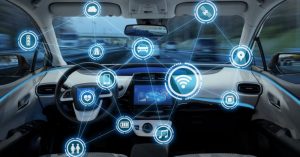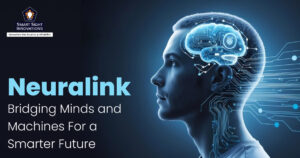 The number of new vehicles introduced on the road every year is alarming compared to the infrastructure improvement pace in various countries. The total number of cars alone has crossed the 38.4 million mark in the UK. The situation in the US is not much different, with the total number of vehicles crossing 276 million during the first quarter of 2019. India, in spite of its developing nation status, registers 54,000 new vehicles daily in spite of congested roads. So almost every country around the world is finding ways to keep road users safe and ensuring the traffic keeps flowing. Fortunately, IoT innovations are slowly taking over to make things easy.
The number of new vehicles introduced on the road every year is alarming compared to the infrastructure improvement pace in various countries. The total number of cars alone has crossed the 38.4 million mark in the UK. The situation in the US is not much different, with the total number of vehicles crossing 276 million during the first quarter of 2019. India, in spite of its developing nation status, registers 54,000 new vehicles daily in spite of congested roads. So almost every country around the world is finding ways to keep road users safe and ensuring the traffic keeps flowing. Fortunately, IoT innovations are slowly taking over to make things easy.
The IoT- Internet of Things technology is slowly influencing almost every sector. Perhaps, the automobile industry is set to witness some of the most significant innovations developed with IoT during the next few years. The indestructible, self-aware, artificially intelligent car ‘KITT’ featured in the American television series, Knight Rider (1982), is not an imagination anymore.
Connected Cars Can Help In Offering A Higher Level Of Road Safety
The Internet of Things technology is helping engineers to connect electric as well as alternative fuel driven vehicles to the internet. It is assisting in protecting cyclists, issuing safety alerts to pedestrians, managing traffic signals, and avoiding vehicular collisions.
These connected vehicles, in combination with road safety infrastructure, can help in considerably improving the driving conditions for drivers. Advanced vehicle-to-vehicle, vehicle-to-pedestrian, and vehicle-to-infrastructure communication systems help in getting the best out of them.
Accidents, collision incidents are reported to the road safety departments automatically to ensure timely medical aid reaches the victims.
Improving Driving Habits
Most of the vehicular accidents on the road happen due to human errors. IoT technology is helping road transport authorities in various countries in monitoring the driving habits of drivers and issuing automatic driving recommendations.
Advanced On-Board Units (OBUs) in cars can link with roadside infrastructure sensors (smart roadside units) and identify potential threats or problems for the driver. The vehicle-to-infrastructure system helps drivers with curve speed warnings, road conditions alerts, and red-light violation warnings as well.
The USDOT (American Department of Transportation) has already started deploying smart roadside units (RSUs) on selected highways for reducing congestion and improving safety for drivers.
Monitoring Vehicles
GPS has proved to be a lifesaver when it comes to vehicle tracking around the world. GPS fleet tracking helps corporates keep track of every vehicle’s daily operations. It helps in increasing daily productivity and reducing costs as well. Now, IoT powered solutions go one step further and help vehicle owners keep track of the car’s functioning as well.
Service providers like Verizon Connect UK are already offering fleet tracking solutions that help commercial companies in monitoring speeding, idling and braking habits of their drivers. Hi-end personal vehicles are also equipped with such features to assist in reducing accidents by improving driving habits.
Retrieving The Data For The Vehicle’s Health
Users would feel confident enough to keep their hands off the wheels only when they are sure about zero-malfunctioning, component, or system failure chances. Thus, scheduled maintenance remains crucial for semi-autonomous and autonomous vehicles for ensuring the car adapts to the rough road conditions.
Electric cars have dedicated smartphone apps that show the air pressure, oil, engine temperature, battery charge percentage, as well as the condition of other components in the vehicle. At present, most of the IoT powered apps work on 3G, 4G cellular networks. Such detailed information about the car’s health help in improving the trust factor. Diagnostic data alerts can help car owners to ensure they take their vehicle at the service center for scheduled maintenance. Such semi-autonomous cars are a step forward towards developing driverless cars.
The data obtained from the vehicles is also helping automobile manufacturers to gauge their vehicle’s performance and in detecting improvement opportunities.
Smart Highways
The Nevada Transport Department’s “Weather savvy roads” project can prove to be an excellent recent case study. The Federal Highway Administration deployed OBUs, RSUs and DSRC technology for transmitting road weather observations to drivers.
The overall goal for the project is to improve road safety and reliability by keeping drivers updated with real-time information about the road, traffic, and climatic conditions in the most cost-effective way possible.
Smart City Roads
Singapore often makes it in the headlines due to its smart parking, traffic lights, and road sensors. The IoT data available to drivers helps them to plan their journeys in the best possible way and avoid congestion charges. These tools have helped the country in reducing toxic gas emissions.
Besides Singapore, even developing nations like India have implemented some of the smart solutions like IoT streetlights. The IoT sensors installed in the Indian city of Jamshedpur, Jharkhand help in adjusting street lights based on traffic movement on various roads. It has helped in drastically reducing power consumption and saving electricity.
The 5G Backbone
The communication between RSUs and OBUs plays a critical role in the functioning of autonomous cars. Intelligent and smart highways can turn into unintelligent ones and jeopardize user safety due to connectivity failure.
At present, highway managing agencies and smart electric car (OBUs) component manufacturers rely on DSRC-Dedicated Short-Range Communications technology in the US, and other low latency communication methods in selected countries.
Data released by the California Department of Motor Vehicles suggests that there are 52 companies, (including Nissan, BMW, Ford, Tesla, Apple, Volvo, Google, and Uber) that have autonomous vehicles in various testing phases in the US alone.
Estimates suggest, by 2022, the number of vehicles equipped with the vehicle-to-everything (V2X) powered technology would reach six million. The roadside infrastructure and on-board units’ connectivity would need strong backing in the form of 5G connectivity. Cellular-V2X technology can take traffic efficiency, automotive safety, and automated driving to the next level.
If you are searching for a reputed firm that offers IoT application development services, you should consider discussing your project with engineers at Smart Sight Innovations. The IoT development company has developed Internet of Things solutions for players from multiple sectors.













